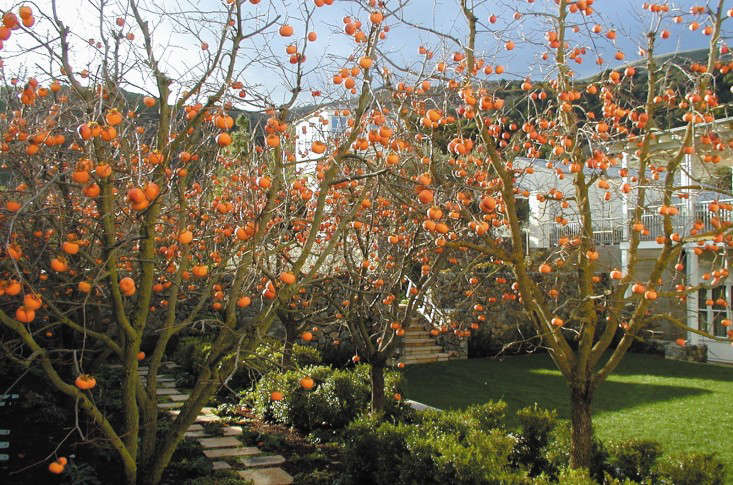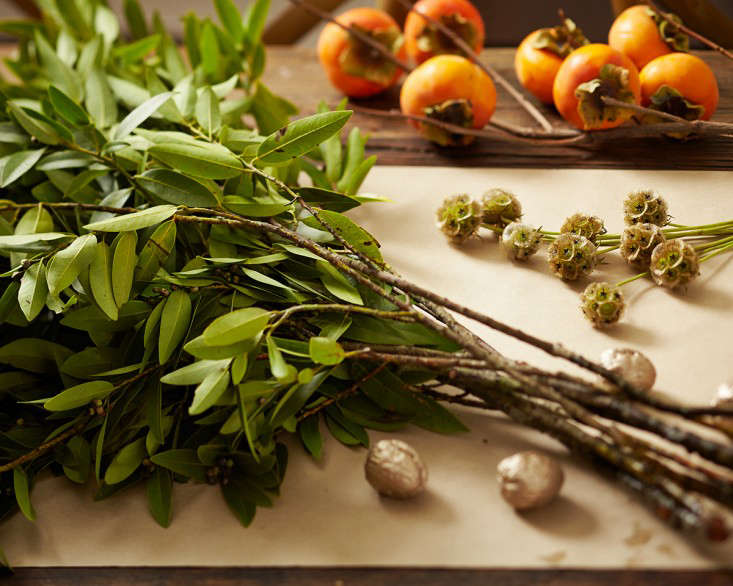Persimmon (Diospyros): “Better Bletted”
A persimmon tree has all the visual requirements of autumn. The leaves turn red before they drop off to reveal a network of black branches festooned with bright orange globes; the fruits last well indoors, so they can be put to decorative use before their next and final trick–being eaten.

The name persimmon derives from the native American (Eastern Algonguian) word “putchamin,” meaning dried fruit. There are many varieties of two main types: astringent (shaped like a pepper) and non-astringent (shaped like a tomato).
Astringent persimmons have a reputation for being intensely bitter because of their high level of tannins when unripe; Hachiya (Japanese persimmon) is a common variety. Astringent persimmons need to be bletted, or allowed to go through a thorough process of ripening, at which point their flavor is highly prized. They can be cooked in salt water, put in the freezer, or enclosed in close quarters with an apple or banana. This is the type of persimmon that is also dried before eating. Non-astringent persimmons are not bitter and can be eaten when still firm (as well as when soft).

Hoshigaki (Japanese dried persimmons) is a process of air drying which results in a white-crusted delicacy with a dark center, resembling a cured salami. The fruit flavor is concentrated and the interior remains moist.
Harvested in October, persimmons are peeled and hung to dry for about six weeks outside, then inside. To bring out the sugary white outer layer, they also need to be massaged every three-five days. Labor-intensive yes, and all the more special.

Cheat Sheet
- Like the tomato, persimmon is a fruit that lends itself to savory dishes. Also like the tomato, it is actually a berry.
- Hashiya (astringent) persimmon is trickier to ripen and best for cooking; Fuyu (non-astringent) is best eaten fresh.
- Store the astringent variety of persimmon in an airtight place with a fruit such as apple, which sends out ethylene gases to speed up the ripening process
Keep it Alive
- Hardy in zones 5-9 (though the American persimmon is more guaranteed in colder zones)
- Generally pest- and disease-free
- Asian persimmon grows to about 15 feet while the Americans happily grow to 35 feet. The size of the latter can be controlled through pruning.

For more about persimmons, see:
- Easy and Elegant Thanksgiving Tabletop
- Sweet Season: Persimmons, from Fall through Frost
- Persimmons: A Seasonal Spice Bread Recipe to Celebrate
N.B.: This post is an update; it was first published October 2014.








Have a Question or Comment About This Post?
Join the conversation